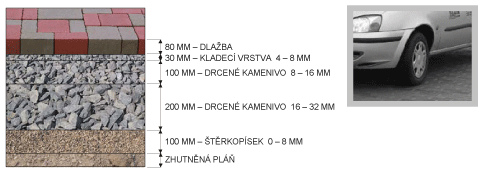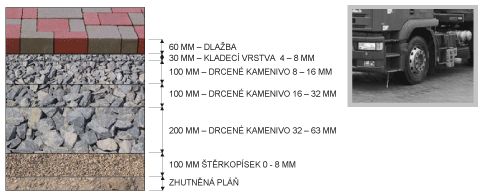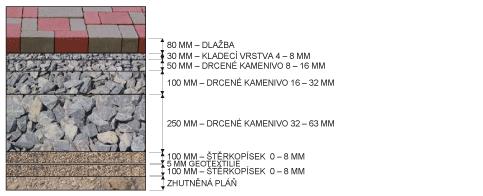Foundation layers
The structure of the foundation layer directly depends on specific geological conditions and anticipated loads on the surface. For larger projects, we recommend that the investors and builders have consultations in this respect with a specialist. The most suitable material for the foundation layer is crushed aggregate fractions 32/63, 16/32, 11/22, 8/16 and for the top layer, so-called laying, the best fraction is 4/8 or 2/5. It is necessary to stress correct and good quality compaction of individual foundation layers, after each layer.
The foundation layer has to first be graded and then compacted. After good compaction of the substrate layer, we produce the top (laying) layer. This layer is not compacted. To help you level the top layer, you can use, e.g., a batten with a proper guide. For practical reasons, we only recommend preparing that part of the top layer on which interlocking pavement will be laid on the same day.
Already installed kerbstones can also be used for levelling the top layer. The optimum thickness of the top layer is 3-5 cm. When producing the top layer, it is necessary to expect the pavement to sink once compacted, by up to 1 cm.
Inspiration patterns for foundation layers
Areas intended for pedestrians:

Areas intended for pedestrians with potential vehicle traffic:

Areas intended for vehicle traffic up to 3.5 t:

Areas intended for vehicle traffic over 3.5 t:

Areas intended for vehicle traffic over 3.5 t in difficult geological conditions:








